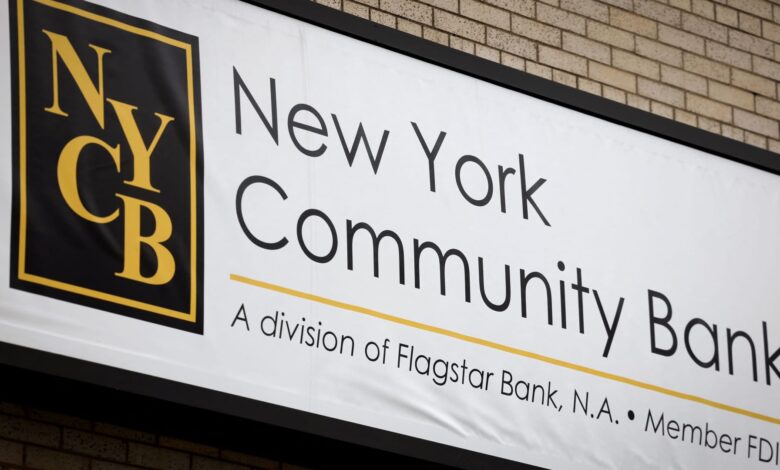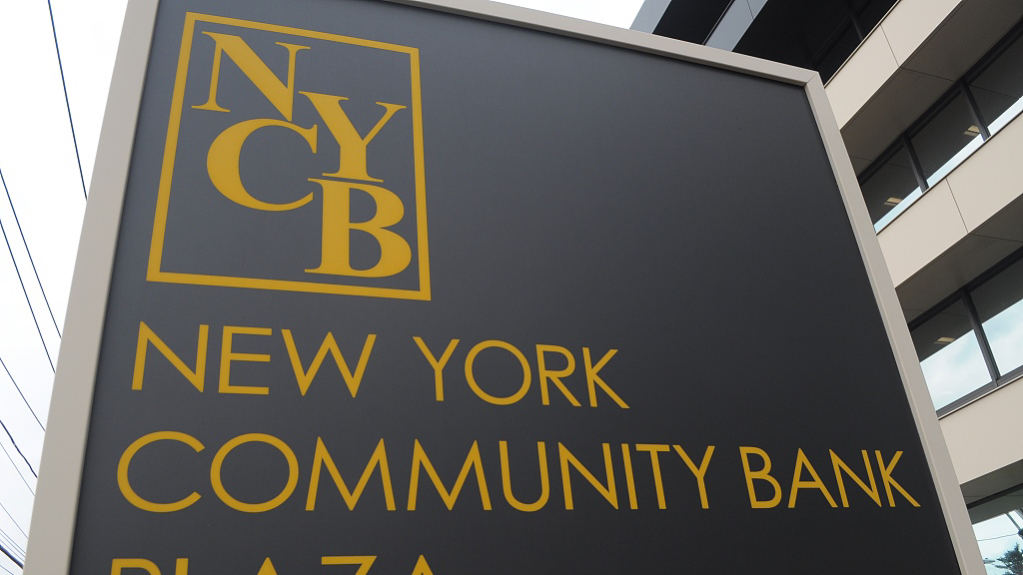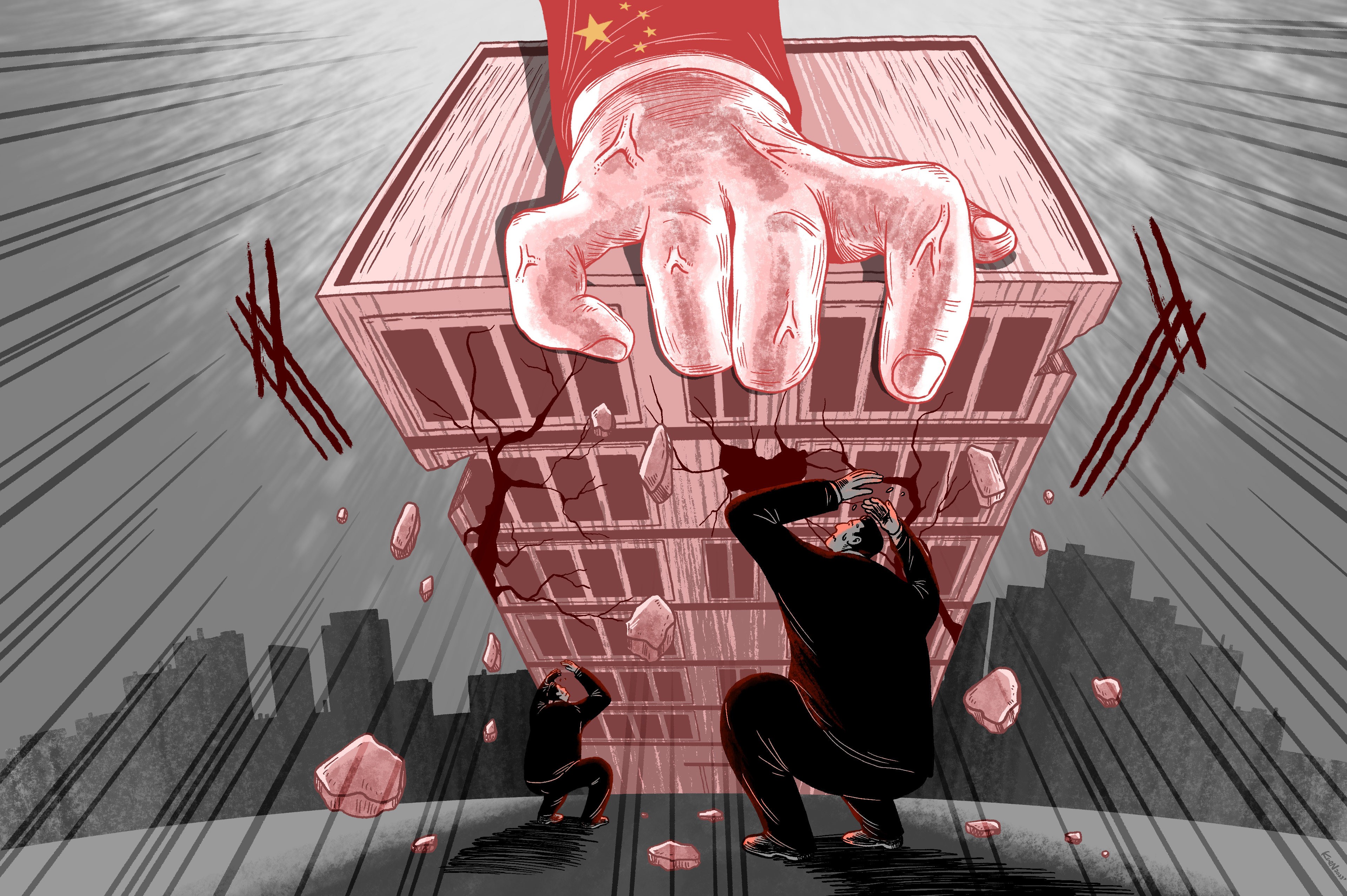NYCB’s Troubles, Investors Worry Real Estate Problems For US Regional Banks Rising; After China’s Real Estate Woes, Could NYCB’s Troubles Foster Another Banking Panic In US?
In the middle of a global backdrop of rising interest rates, the commercial real estate sector has come under immense pressure in recent years. This has been particularly pronounced in recent times in China and now it is turning into a problem for the United States, home to the world's largest commercial property market, where prices have experienced a significant downturn since the Federal Reserve began its interest rate hikes in March 2022. This challenging environment has not only affected property values but has also had far-reaching consequences for financial institutions operating within this sector. One such institution facing notable challenges is New York Community Bank (NYCB), which, despite its strategic moves during the banking crisis, now finds itself grappling with mounting losses and investor scrutiny.

The global commercial real estate sector has faced significant pressure with rising interest rates over recent years, as lately seen in China; similarly, in the United States, home to the world’s largest commercial property market, prices have plummeted by 11 per cent since the Federal Reserve began raising interest rates in March 2022, wiping out gains from the preceding two years.
During the banking crisis last spring, New York Community Bank capitalized on the downfall of a competitor by acquiring a substantial portion of its business. However, the bank is now grappling with the consequences of that decision.
The challenges primarily stem from a deteriorating commercial real estate market, which has compelled NYCB, which operates over 400 branches, including under brands like Flagstar Bank, to acknowledge mounting losses.
In parallel to last year’s crisis, the bank cited its expanded size following the acquisition of Signature Bank as aggravating its troubles as this expansion necessitated keeping more funds on hand, squeezing profitability, and prompting consideration of selling distressed assets earlier than desired.
Concerns about the bank’s ability to weather such pressure surfaced openly over the past week, as NYCB’s stock plummeted by nearly two-thirds following a dismal earnings report.
Despite efforts by the bank to project stability, including the release of new financial disclosures termed a “late-night news dump” by one analyst, shares rebounded by 7 per cent on Wednesday, only to resume their decline with a 9 per cent loss in early trading on Thursday.

The Rising Fear
The heightened investor scrutiny surrounding regional banks, particularly regarding their exposure to commercial real estate, has intensified and some anticipate further challenges for those holding office and multifamily property loans.
Fears regarding the health of smaller banks have resurfaced a year after the collapse of Silicon Valley Bank in the spring of 2023, which triggered a regional banking crisis.
NYCB’s recent earnings release, which caused a sharp decline of approximately 60% in its shares, has drawn particular attention from investors examining the portfolios of regional banks.
According to research from Apollo, small banks represent nearly 70% of all outstanding commercial real estate (CRE) loans.
The Outlook
Short-seller William C. Martin of Raging Capital Ventures commented that with high-interest rates persisting, banks are likely to encounter difficulties with CRE loans.
Martin, who opted to bet against NYCB following the bank’s dire Jan. 30 earnings report detailing real estate losses, anticipates further declines in shares.
Having previously shorted Silicon Valley Bank before its collapse, Martin shorted NYCB due to expectations of reduced earnings potential and the potential need for capital raising. Although NYCB mentioned the possibility of a capital increase on Wednesday, it clarified that there is no immediate plan for such action.
Dan Zwirn, co-founder and CEO of distressed debt investment firm Arena Investors, emphasized the heightened vulnerability of regional banks to interest rate fluctuations.
Zwirn, who intends to steer clear of real estate investments for the next couple of years, pointed out the increased risk of default. Intrestingly, the KBW Regional Banking index has declined by approximately 11% since NYCB’s announcement.
The CRE market continues to grapple with the fallout from the COVID-19 pandemic.
Fitch projects that delinquency rates on commercial mortgage-backed securities (CMBS) will climb to 8.1% in 2024 as numerous companies struggle to adapt to remote and hybrid work arrangements.
Similarly, CMBS loan delinquencies in commercial multifamily properties are anticipated to reach 1.3% in 2024, up from 0.62% in 2023.
Moreover, according to Goldman Sachs research, the CRE sector faces pressure from rising interest rates, with approximately $1.2 trillion in commercial mortgages slated to mature in the coming years. There is also heightened risk associated with commercial multifamily assets in New York City.

Why The Concern For NYCB
NYCB stands out due to its significant role as a lender for rent-stabilised New York City landlords.
The company has disclosed that over half of its multifamily loan portfolio is tied to properties in New York state, many of which are subject to rent regulation laws.
While historically the default rate on New York’s rent-stabilized housing has been low, it rose from 0.32% in April 2020 to 4.93% in December 2023, influenced by the pandemic and legislation limiting landlords’ rent increase abilities, according to Stephen Buschbom, research director at real estate data provider Trepp.
Some investors are closely monitoring banks with a high concentration of real estate loans.
According to data from Trepp, both OceanFirst and Valley National, along with NYCB, have CRE holdings that represent over 300% of their total risk-based capital.
This level of concentration may indicate significant exposure to CRE risk, as outlined in public guidelines from the Federal Deposit Insurance Corporation (FDIC).
Valley National’s CRE holdings accounted for 479% of its total risk-based capital in the fourth quarter, while OceanFirst’s stood at 447%; in comparison, NYCB reported a ratio of 468% as of the third quarter.
Fitch’s analysis revealed that nearly 1,900 banks with assets less than $100 billion have CRE loans outstanding exceeding 300% of equity.
In a detailed report in December, Fitch also warned that a 40% average decline in prices could lead to losses in CRE portfolios significant enough to cause the failure of a moderate number of primarily smaller banks.
Thus, there is anticipation among investors that certain regional banks might face pressure to offload loans at a loss or bolster provisions for potential losses.
Some regional banks, particularly those with exposure to New York City’s rent-stabilized multifamily loans, have initiated discussions about selling these loans as well as other assets.
What’s The Plan
NYCB stated on Wednesday that potential options could include loan sales, emphasizing the bank’s intent to diligently reduce its concentration in commercial real estate (CRE).
However, this strategy might not be ideal given that current property valuations are significantly lower—ranging from 50% to 75% below their values at the time the loans were originated, as highlighted by Rebel Cole, a finance professor at Florida Atlantic University.

The Viewpoint
The challenges facing regional banks in the United States due to the commercial real estate (CRE) sector’s downturn are evident; as investors anticipate potential loan sales and increased provisioning for losses, thus, banks like NYCB are under pressure to mitigate their exposure to CRE.
However, selling loans may not be a straightforward solution given the substantial decline in property valuations since the loans were originated.
Comparatively, China’s real estate market also faces significant issues, albeit with some differences.
Both countries are grappling with property market corrections, but China’s situation is aggravated by factors such as overleveraging, speculative bubbles, and regulatory crackdowns on the sector.
The scale and interconnectedness of China’s real estate market pose broader systemic risks, impacting not only financial stability but also social and economic dynamics on a national scale; hence, China’s challenges are more deeply rooted in structural issues and regulatory interventions.
Meanwhile, interest rate dynamics and market corrections primarily drive the US situation.




